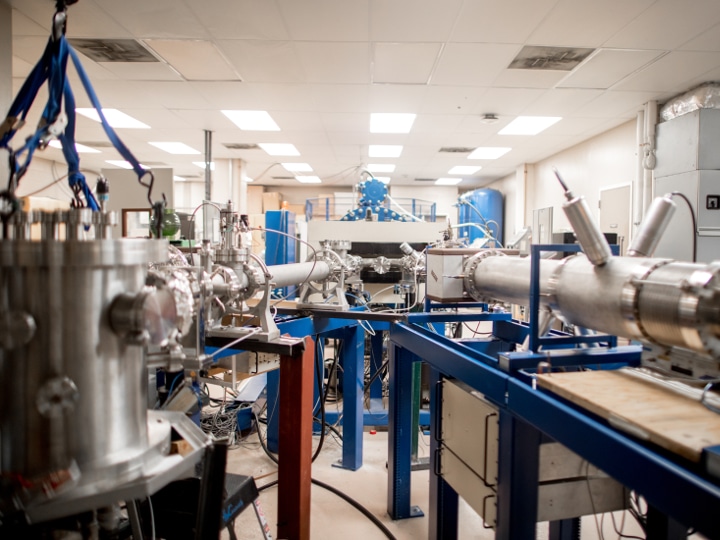Mar 12 2019
Even the tiniest mechanical pumps have drawbacks caused by the intricate microfabrication techniques needed to manufacture them and the reality that there are restrictions on how small they can be.
 Researchers have announced the discovery of a laser-driven photoacoustic microfluidic pump, capable of moving fluids in any direction without moving parts or electrical contacts. (Image credit: University of Houston)
Researchers have announced the discovery of a laser-driven photoacoustic microfluidic pump, capable of moving fluids in any direction without moving parts or electrical contacts. (Image credit: University of Houston)
Scientists have revealed a promising solution, a laser-driven photoacoustic microfluidic pump, with the ability to move fluids in any direction without moving parts or electrical contacts.
The research is reported in the Proceedings of the National Academy of Sciences.
With the help of a plasmonic quartz plate implanted with gold atoms, the scientists showed the ability to move liquids by using a laser to produce an ultrasonic wave.
We can use the laser to make liquids move in any direction.
Jiming Bao, Study Lead Author and Associate Professor, Department of Electrical and Computer Engineering, University of Houston.
The research is based on a new optofluidics principle found out by Bao’s lab and published in 2017. That study described the use of a laser to stimulate a stream of liquid, coupling photoacoustics with acoustic streaming.
In the latest study, a quartz substrate implanted with 1016 gold atoms, or ten thousand trillion atoms, per square centimeter was developed. Also, the study tested whether a laser pulse could produce an ultrasonic wave that can generate a liquid stream. The quartz plate—approximately the size of a fingernail—was implanted with gold nanoparticles; when a pulsed laser strikes the plate, the gold nanoparticles produce an ultrasonic wave, which then directs the fluid through acoustic streaming.
“This new micropump is based on a newly discovered principle of photoacoustic laser streaming and is simply made of an Au [gold] implanted plasmonic quartz plate,” the researchers wrote. “Under a pulsed laser excitation, any point on the plate can generate a directional long-lasting ultrasound wave which drives the fluid via acoustic streaming.”
The research could have practical implications ranging from drug delivery and biomedical devices to optofluidic and microfluidic research. Wei-Kan Chu, a physicist and project leader at the Texas Center for Superconductivity at UH, said the exact value is not yet identified.
We would like to better understand the mechanisms of this, and that could open up something beyond our imagination.
Wei-Kan Chu, Physicist and Project Leader, Texas Center for Superconductivity, University of Houston.
The device was developed in Chu’s lab, who is a co-author, along with Nzumbe Epie, Xiaonan Shan, and Dong Liu, all of UH; Shuai Yue, Feng Lin, and Zhiming Wang of the University of Electronic Science and Technology of China; Qiuhui Zhang of Henan University of Engineering; and Suchuan Dong of Purdue University.
According to Bao, the nanoparticles provide nearly an unlimited number of targets for the laser, which can be aimed far more accurately when compared to a mechanical micropump.
“The mechanisms of how and why these works are not yet very clear,” Chu said. “We need to understand the science better in order to develop the potential of its unforeseeable applications.”